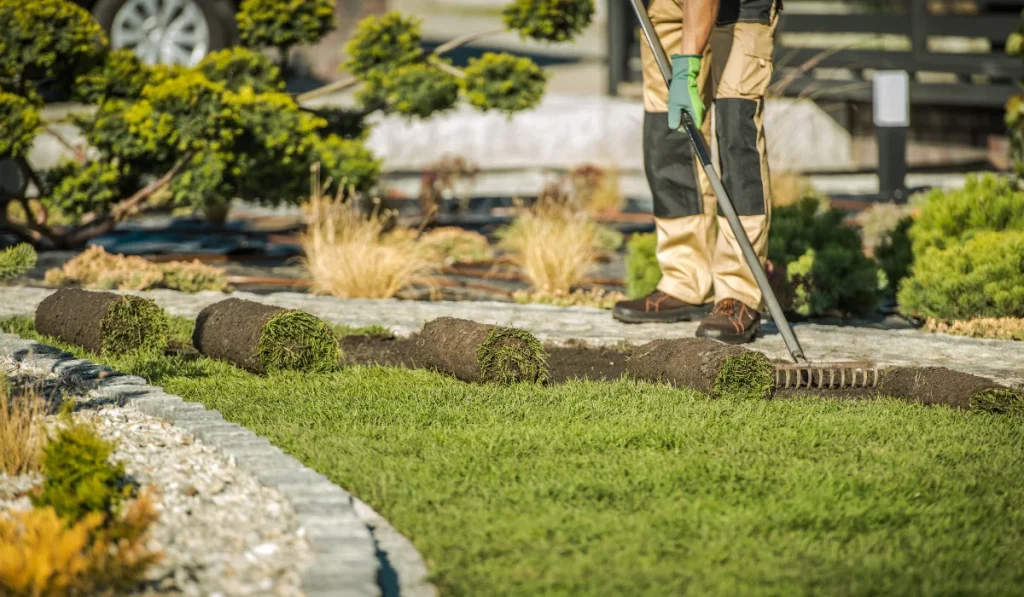In 2021, California’s state legislature passed a bill banning the sale of all small off-road engines, or SOREs. Starting in January of 2024, the new law requires all new lawn tools, such as mowers, leaf blowers, and chainsaws, to be zero-emission models moving forward.
The California Air Resources Board is leading this initiative to phase out the sale of gas-powered lawn equipment, with a goal to cut emissions from these engines.
But what are the real-life implications of this ban when it comes to business owners? Is California actually prepared for this shift? To find out, we spoke with Gene Barrow, lawn care expert and owner of SodLawn.
Key Takeaways
- California’s 2024 ban requires new lawn tools to be zero-emission models, targeting SORE emissions.
- Electric equipment is quieter and reduces emissions but raises concerns about battery waste and power demands.
- Professionals face challenges with costly electric tools, short battery life, and limited repair options.
- Rebates are insufficient, and California’s power grid may struggle to support the electric transition.
What Are the Benefits of This Ban?
Reduced Noise Pollution
When asked about the benefits of California’s new ban, Barrow said there were some clear benefits.
“The noise, I think, is probably the biggest benefit that I see.” A gas-powered leaf blower can produce noise levels of 70 to 75 dB at a distance of 50 feet, and can escalate to 90 to 100 dB at the operator’s ear.
OSHA mandates the use of hearing protection for noise exceeding 85 dB. The World Health Organization also notes that noise levels above 75 dB present an “increasingly predictable risk” of hearing damage.
Electric leaf blowers are much quieter, generally running at around 65 dB. So for California residents who are tired of being woken up by very loud leaf blowers, you are in luck.
What Are the Potential Drawbacks of This Ban?
Cost Impact on Business Owners
The state has set aside $30 million to help residents and businesses cover the costs of new electric landscaping equipment.
However, with an estimated 2 million gas-powered tools in use by professionals across the state, this only comes out to about $15 per piece of equipment ($30 million divided by 2 million tools).
Knowing that a new electric commercial riding lawn mower could cost between $30,000 to $40,000, the state’s budget is just a drop in the bucket.
Technological Limitations
While electric mowers and blowers can be great for residential use, most zero-emission equipment isn’t yet powerful or durable enough to handle a full workday for professionals.
“While demoing different manufacturers’ equipment,” Barrow said, “one riding mower was so new that in the demo it was giving error codes and needed to be sent back to the manufacturer for inspection.”
Electric tools also have short battery life, often requiring multiple batteries just to get through a single job, and there is limited availability of spare batteries and repair resources. This makes it harder for businesses to rely solely on electric tools.
How Will This Ban Impact the Environment?
Whether you’re dealing with emissions and energy concerns, there are environmental consequences for both electric and gas-powered SOREs. Below, we explore the implications of both.
Batteries
When talking about the environmental impact of electric SOREs, Barrow expressed concern about what we’re going to do with all the batteries after they die.
“I have to have 25 batteries, and these are big ones. Think of a cordless drill set, where you pop in the battery at the bottom of the drill. Well, four of those, end to end, four or five of them. And that’s the size of the battery that I have to have–25 of those.”
“And what are we doing with all of these batteries? I think the technology will get to the point where maybe they can recycle them. We’re pretty smart, but what are we going to do with all these batteries that we’re producing for these?”
Energy Supply
Charging any electric vehicle requires power, and there are limitations to what utility providers can provide. In California–where temperatures continue to rise and AC usage increases–utility companies are already strained.
Can the state afford to supply the kind of power needed to support this legislation?
While Barrow agrees that things can change, right now, he doesn’t think so.
“I have to run huge amounts of power from the utility provider to my shop and have service upgraded to be able to handle the power load of all of this transmission. The utility companies do not have enough power to give us in California and we do brown outs because we are so low in power.”
Gas-Powered vs. Electric Lawn Equipment: Cost Comparison
For the moment, electric lawn equipment comes with a higher price tag. Here’s a breakdown of the average costs of residential lawn mowers:
| Lawn Mower Type | Cost |
|---|---|
| Gas-powered push mower | $100 – $600 |
| Gas-powered self-propelled mower | $300 – $700 |
| Gas-powered riding mower | $1,000 – $3,500 |
| Electric push mower | $300 – $600 |
| Electric self-propelled mower | $400 – $1,000 |
| Electric riding mower | $1,000 – $3,500 |
Businesses and commercial operations, however, are looking at far greater expenses than residents.
“Just to compare costs,” Barrow says, “a standard commercial mower costs around $13,000 to purchase. For an electric mower, it’s $30,000 to $40,000.”
This doesn’t include the cost of batteries. For the electric mower mentioned above, Barrow told us they still have to “replace those batteries in three to five years, and the battery replacement is between $10,000 to $15,000.”
There are, however, rebate programs to help with this cost. The Inflation Reduction Act of 2022 includes a tax credit for commercial electric lawn mowers, which includes 30% of the purchase price (max. $7,500).
How Can You Prepare for This Ban?
With the gas-powered lawn equipment ban approaching, early planning is key for both residents and businesses. Taking proactive steps now can help you transition smoothly and avoid unnecessary expenses down the road.
For residents, switching to electric lawn tools may cost more upfront but can save on fuel and maintenance long-term. Research tools with good battery life, budget for the switch, take advantage of rebates, and consider backup batteries for larger yards.
Businesses should invest in extra batteries, train staff on electric tools, and test equipment early to avoid downtime. Stay informed on incentives and gradually phase out gas-powered tools to spread out costs.
Looking Ahead
While the switch to zero-emission equipment comes with its fair share of hurdles, it’s also an exciting time for innovation. Technology in this space is evolving fast, and it’s only a matter of time before electric tools improve and become more affordable.
California’s shift is likely to spark bigger changes, paving the way for a more sustainable lawn care industry that benefits both the planet and future generations.
Sure, it’s not an easy transition, but hopefully it’s the first step toward a cleaner, quieter, and more eco-friendly future.



